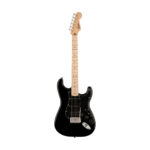Hello! You’ve discovered the quickest and most accurate method to tune your guitar online. Utilizing our free online guitar tuner, which operates through your device’s microphone, you can ensure your instrument sounds perfect. This tuner is versatile and works seamlessly with both acoustic and electric guitars.
Standard Guitar String Notes Explained
In standard guitar tuning, each of the six strings is tuned to a specific note. Understanding these notes is the first step to accurate tuning:
- 1st String – E4 (Highest Pitch/Thinnest String): This is the thinnest string and produces the highest pitch in standard tuning.
- 2nd String – B3: The second thinnest string, tuned to B.
- 3rd String – G3: The G string, located in the middle of the fretboard.
- 4th String – D3: The D string, often used for bass notes in chords.
- 5th String – A2: The A string, providing a lower register sound.
- 6th String – E2 (Lowest Pitch/Thickest String): This is the thickest string and produces the lowest pitch E in standard tuning.
Step-by-Step Guide: How to Tune Your Guitar with an Online Tuner
Tuning your guitar with our online tuner is straightforward. Just follow these simple steps:
- Enable the Tuner: Click the “Turn on” button located just below the tuner interface.
- Microphone Access: Your device will request permission to access your microphone. It’s essential to allow microphone access ⏺ for the online tuner to hear your guitar’s sound.
- Play a String: Pluck any string on your guitar. The chromatic guitar tuner will immediately detect the note you are playing and display it on the interface. It will also indicate whether the string is in tune (accurate), sharp (too high), or flat (too low).
- Adjust the Tuning Peg: Observe the tuner display. If the note is not green and centered, carefully turn the corresponding tuning peg on your guitar’s headstock.
- To raise the pitch (sharpen the note), gently tighten the string by turning the peg.
- To lower the pitch (flatten the note), loosen the string by turning the peg in the opposite direction.
- Tune to Green: Continue adjusting the tuning peg while plucking the string until the note displayed on the tuner turns green. This green indication confirms that the string is accurately tuned to the correct pitch 👍!
- Repeat for All Strings: Tune each string individually, following the standard string notes listed above. Start from the 1st string (E4) through the 6th string (E2), or vice versa, depending on your preference.
- Fine-Tuning and Re-Checking: After tuning all six strings, it’s crucial to check the tuning again, perhaps in reverse order (from 6th to 1st string). Adjusting one string’s tension can slightly affect the tuning of others due to changes in the overall tension on the guitar neck. For instance, tightening the 1st string might slightly loosen the lower strings.
Explore Alternate Guitar Tunings
Achieving Optimal Guitar Tuning Quality
This online tuner utilizes precise frequency analysis to help you fine-tune each string of your guitar. However, the accuracy of the tuning can be influenced by factors such as:
- Microphone Quality: The frequency response of your device’s microphone plays a role in the tuner’s sensitivity.
- Ambient Noise: External sounds and background noise can sometimes interfere with the tuner’s ability to accurately detect the guitar string’s frequency. Tuning in a quiet environment is recommended for the best results.
For situations where microphone issues arise, or if you prefer tuning by ear, we also provide reference sounds for each guitar string on this page. Listening to these reference sounds can be a helpful supplementary method for tuning your guitar.
How Often Should You Tune Your Guitar?
Regular guitar tuning is essential to maintain a pleasant sound. Several factors necessitate periodic tuning adjustments:
- Frequent Playing: Active playing, especially bending strings and strumming forcefully, can gradually cause a guitar to go out of tune. As a general guideline, tuning after every hour of continuous play is advisable.
- Environmental Changes: Fluctuations in temperature and humidity significantly impact a guitar’s tuning. Wood expands and contracts with these changes, affecting string tension.
- Storage: Even when not played, a guitar can lose its tuning over time, especially if stored for extended periods. Long-term storage without tuning checks is likely to result in detuned strings.
- New Strings: New guitar strings stretch considerably after being installed. Therefore, guitars with newly installed strings will require more frequent tuning until the strings stabilize.
As a rule of thumb, if it’s been more than a week since your last tuning, or even a few days with changes in environment, it’s highly likely your guitar will benefit from being tuned again.
🔖 Bookmark this page to ensure that tuning your guitar is always a hassle-free process. We hope you enjoy playing in tune!

